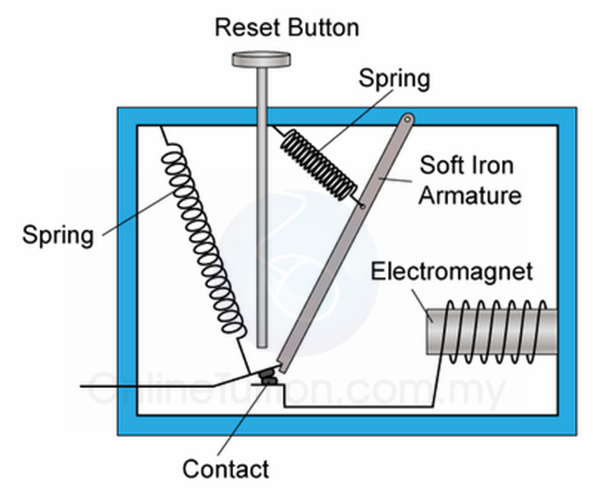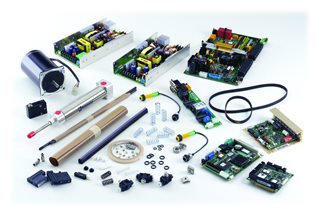A circuit breaker is a preventative safety device that detects and stops a circuit if the current is insufficient or in excess. These devices help insure the stability of the electric current in our buildings. Unlike fuses, breakers are reusable and can be consistently relied upon to break a circuit to protect us from potential electrical fires.
How do they work?
A breaker is comprised of a few basic components. A switch is connected to an electromagnet that allows electricity to flow from the bottom to the top terminals.

http://spmphysics.onlinetuition.com.my/2008/06/uses-of-electromagnet-circuit-breaker.html
With current running through the electromagnet, it becomes magnetized. If the current is suddenly increased, the magnet becomes strong enough to pull down a metal lever attached to the switch linkage. By doing so, the contacts are broken and the electricity is powered off.
What’s the difference between certain breakers?
Residential Circuit breakers- Used in common household wiring to protect electrical appliances like refrigerators, washing machines and fans. Electrical panels can also be designed to have one breaker controlling one specific or multiple outlets in a room that shut off when overloaded.
Industrial Circuit breakers- Used with much larger electrical current applications for warehouses, factories, and other large industrial locations. They can be used to insure safety of the plant equipment, lighting, business systems, air conditioning and wiring.
Voltage– Describes the ‘pressure’ of the electricity. The most common voltages of breakers are . Most household voltage is 120V, with larger appliances around 240V.
Amperage– Measures strength of the current in amperes. Common amperages include 15A, 20A, 25A, up to 6000A.
Pole number– Describes the number of completely separate circuits that can be protected by a circuit breaker at the same time. These include single-pole, double-pole, triple-pole and tandem pole breakers.
Installation location/External Design– Breakers can be designed to be indoor or outdoor based on the application. Different enclosures can be made to withstand different weather conditions.
Interrupting Mechanism– Other breaker designs include air circuit, oil circuit, vacuum circuit, MCB, MCCB, GFI, GFCI and AFCI breakers. While these all serve the same purpose of breaking electrical current in the event of unstable electric power consumption, they have different means of interrupting the current.
Visit MRO Electric and Supply’s website to see all of our available Circuit Breakers. If we don’t have what you need listed on the site, contact us at sales@mroelectric.com or (800)691-8511 and we will be happy to help.
Updated on May 13, 2020 by David Link
